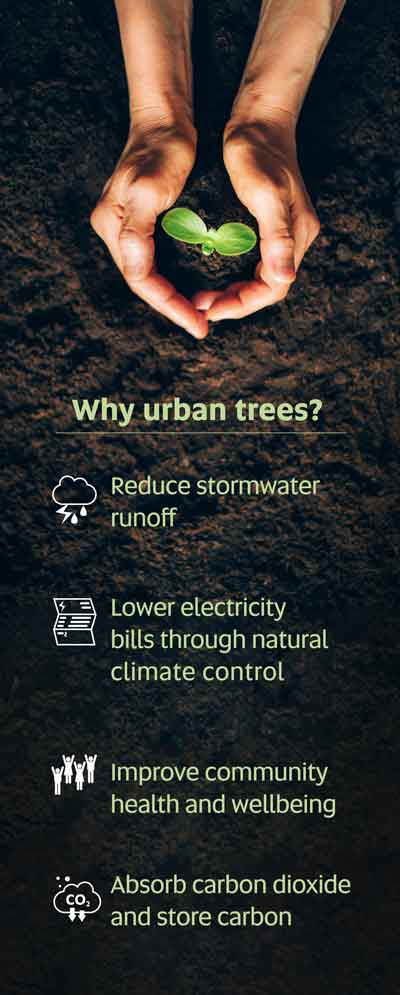Article Lead In
07 July 2022
AUTHOR: ROSANNA GALVIN
> BREAKOUT STORY: Art brings fresh perspective to climate change conversations
As the world’s temperature rises and the effects of climate change are felt through extreme weather events, it can be hard to look past the doom and gloom. But there is also a story of hope and innovation. Researchers are focused on finding solutions and their message is clear: there is still time to act and we all have a part to play.
“It’s now or never if we want to limit global warming to 1.5°C. Without immediate and deep emissions reductions across all sectors, it will be impossible.”
It’s a foreboding statement from Professor Jim Skea, speaking on behalf of the working group of the Intergovernmental Panel on Climate Change’s (IPCC) latest report, which was approved by 195 member governments around the world in April.
In Australia, the report’s release closely followed weeks of devastating floods in eastern parts of the country, where high intensity rainfall – widely attributed to climate change – led to more than 20 people being killed and thousands of homes and businesses being flooded.
The scenes of entire towns submerged, coupled with the stark findings of the IPCC report – which shows global greenhouse gas emissions must peak before 2025 at the latest, and be reduced by 43 per cent by 2030 to limit warming to around 1.5°C – paint a grim picture for the planet.
But despite the overwhelming headlines and the seemingly impossible task ahead, the IPCC report also offers a glimmer of hope. A joint statement by COP26 President Alok Sharma, COP27 President-Designate Sameh Shoukry and UN Climate Change Executive Secretary Patricia Espinosa said: “Despite the urgency of our task, there is hope. The window for action has not yet closed.”
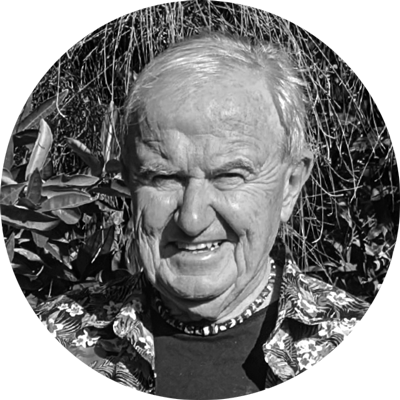
It’s a sense of optimism shared by Professor of Environmental Mathematics at UniSA John Boland. Reflecting on his own experiences as a researcher finding solutions to address the effects of climate change and as an advocate for sustainable living, Prof Boland is buoyed by the positive changes he is seeing at a grassroots level despite lack of action federally.
In his own life, Prof Boland has already taken more steps to fight climate change than most. The home he shares with his wife is designed to use natural elements – such as strategic window placement – to manage indoor temperatures, while the garden produces a third of the food they consume.
The couple also own a conservation property in Monarto, where their dedication has created a haven of biodiversity. It is here, in the native shrubland an hour’s drive from Adelaide, where Prof Boland feels a real sense of hope.
“Twenty years ago, when I went to a meeting about climate change, the average age of people attending was probably 60; today I see so many young people involved and that’s got to give you hope,” he says.
“Young people are not only involved in protests but in action as well. Near our property in Monarto, there is a revegetation project run by an organisation called BioR. These days when you go to seed planting events there, it’s heartening to see the number of young people not only volunteering but also taking on leadership roles in the organisation.”
Reports by the IPCC – the United Nations body for assessing the science related to climate change – offer regular assessments on the impact and risks of climate change. But Prof Boland is quick to point out that the reports also highlight the opportunities that exist as researchers, governments and ordinary citizens develop new strategies for adaptation and mitigation.
“The IPCC reports provide a heightened understanding about the huge difference between global warming of 1.5 degrees and 2 degrees and how critical it is to hold down the temperature as much as possible” he says.
“It’s not linear – the risk magnifies dramatically as the thermostat goes up. It’s an important message in the reports but it’s not the only message.
“The reports also outline the positive steps people can take to make a difference. It’s not just a list of risks, it outlines tangible things people can do across a whole range of areas, from diet and food consumption to planting vegetation in homes.”

Prof Boland is currently supervising UniSA PhD candidate and qualified architect Mina Rouhollahi, whose research explores a simple mitigation strategy many Australians could adopt in the fight against climate change – planting residential trees.
Her research suggests that planting just a few trees on private properties could have a big impact on the environment, as well as energy bills and wellbeing. She’s done the work for the average homeowner already – and established the exact number of trees needed to make a difference.
The results, which provide optimal tree planting strategies for different housing configurations, nominating specific tree types, tree volumes, and correct placement to achieve maximum benefits, were published in the journal Energy and Buildings earlier this year.
“My research objective is not to design a jungle; it’s to determine what is the minimum number of trees we need to plant on private properties to get results,” Rouhollahi says.
“It turns out that even three small trees planted strategically can lead to cheaper energy bills and more climate comfort inside the home. At the same time, the trees contribute to the creation of sustainable neighbourhoods and give the next generation a chance to have a deep connection to nature.
“Greenery is critical as mitigation strategy for global warming – it’s a powerful tool we can all contribute to in tackling climate change with so many benefits beyond reducing carbon emissions.”
Injecting greenery into existing urban areas, as well as ensuring greenery is part of the development of new homes and cities, is a mitigation strategy presented in the latest IPCC report.
The report highlights the potential that vegetation- and water-based infrastructure has to directly reduce climate change by sequestering and storing carbon, as well as indirect benefits such as a cooling effect that leads to less energy use.
Rouhollahi says the humble tree boasts a host of other advantages such as reducing stormwater runoff and improving the mental and physical health of residents – and it’s relatively easy for people to do.
“While the role of policymakers, planners, designers and builders in creating green infrastructure can’t be downplayed, everyone can play a part in building a greener future,” she says.
“Redesigning our homes with trees in mind will better serve residents, cities and the environment. Trees have so many benefits: they shield us from the sun, provide wind protection, reduce stormwater runoff, and provide passive cooling and natural ventilation.
“The net result is a more energy efficient home, lower energy costs, reduced air conditioning, CO2 emissions and less polluted air.
“We have the power to influence the design process, requesting tree allocation when building or buying a home, in the same way people insisted on a double garage in the 1990s.”
UniSA Bachelor of Science student Ishika Mahajan believes small changes, such as the one Rouhollahi presents in her research, can lead to a better future. She is using the power available to her to act against climate change and is encouraging others to do the same.
Growing up in India, Ishika has always felt a connection with the natural world and once thought she would follow in her great grandfather’s footsteps to become a scientist. While she’s since discovered she prefers being in the laboratory rather than out in the field, she remains an active campaigner for sustainability and is Vice President of the UniSA Student Association’s Student Sustainability Collective.
Ishika supports the collective in a number of on campus and online initiatives designed to promote awareness of sustainability practices. Through this work, Ishika has talked to dozens of peers, and says there’s a real appetite to live more sustainably.
“Students are not ignorant at all, they know about climate change, they believe it’s a serious problem – and they want to do something for future generations,” she says.
“Even though it might be tied up with a TikTok trend or it’s just the ‘cool thing’ to do – if taking a hessian bag to the supermarket or becoming a plant mum is cool – and it helps the planet, then who cares?

“I’m not perfect, but I do believe doing something is always better than doing nothing – and that’s what the Student Sustainability Collective is about. We give people easy, student-friendly options to live a more sustainable life.”
At age 20, Ishika is still a relatively new recruit in the battle against climate change yet her message of hope echoes Prof Boland’s, who has spent more than 30 years fighting for the environment. Like Prof Boland, Ishika feels positive about her generation and the world they could help create.
“I study science, I’m an analytical person. I know we don’t have a lot of time left – but I do have hope for a better future,” Ishika says.
“We have great human power, we have great human intelligence, we have great ideas, we have great scientists. We can still turn things around for our planet.”
In Australia, results from the country’s Federal election in May also offer renewed optimism in the fight against climate change as voters ushered in a number of Green and Climate-200-backed independent candidates in seats traditionally held by Liberal Party members with conservative climate change policies.
While evidence about humankind’s unsustainable lifestyles on Earth continues to stack up, students such as Ishika represent a new generation already taking a stand and finding a way forward. And with scientists such as Prof Boland and Rouhollahi developing innovative and accessible climate change mitigation and adaptation strategies, the window of opportunity to save the natural world remains open, offering hope and the chance to act.
Art brings fresh perspective to climate change conversations
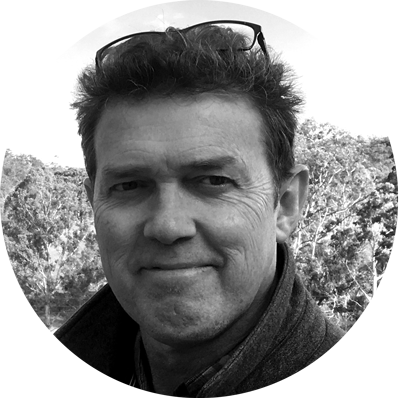
Data can be a powerful tool in addressing the challenges of climate change, providing an understanding of what has happened and predicting what lies ahead. But UniSA artist Peter Walker says the arts is also essential in tackling the task ahead, offering a different lens to explore environmental issues.
A practising sculptor and educator, Walker says that in a world in which people are often overloaded with information, art and design can help them interpret information in new ways.
“Art has this ability to bring a fresh perspective – it can get us to relook at certain things and open up the cracks to reveal new ways of thinking,” he says.
“It can help us decipher the vast information available to us, potentially reinterpret it, and put it out for reconsideration.
“As a society grappling with difficult questions, like how we can adapt and mitigate climate change, art can also offer an emotional response to the world around us.
“When it comes to issues like climate change, sharing ideas and generating discussions is so important. Art in all its forms has the ability to stimulate these critical conversations.”
Walker, who is Program Director: Master of Design at UniSA, recently worked with fellow artists, geologists and a musician to create an immersive exhibit in MOD.’s latest exhibition INVISIBILITY.
Underground takes visitors on a journey through time with animations, sculptures and sound coming together to illustrate how climate change is influencing the Eyre Peninsula and its rugged coastline in western South Australia.
The exhibit is informed by UniSA geoscientists Professor Tom Raimondo’s and Dr Alicia Pollett’s research, which is investigating the rocks kilometres beneath the ground of the Nullarbor. Once connected to Antarctica, the rocks there can help inform how climate change will impact the icy continent.
Walker’s contribution is a series of colourful sculptures, inspired by the phenomenon of upwelling along the Great Australian Bight, when high-pressure systems create onshore winds that draw nutrient-rich, cold-water organisms from the depths of the ocean to the surface.
“All the plant life along that coastline actually has a relationship to the depths of the ocean,” Walker says.
“I designed the sculptures with the goal of prompting people to think about how life on this planet has evolved and adapted to changing circumstances.
“As our climate begins to change more rapidly, what kinds of things are we going to see happen? How will we adapt? How will our natural environment evolve?”
Underground is a collaborative exhibit by Walker, Prof Raimondo, Dr Pollett, artist and storyteller Ali Gumillya Baker, animation artist Agnieszka Woznicka and musician Surahn Sidhu.
For more information on the exhibit and for details on MOD. – a museum of discovery at UniSA – go to www.mod.org.au.



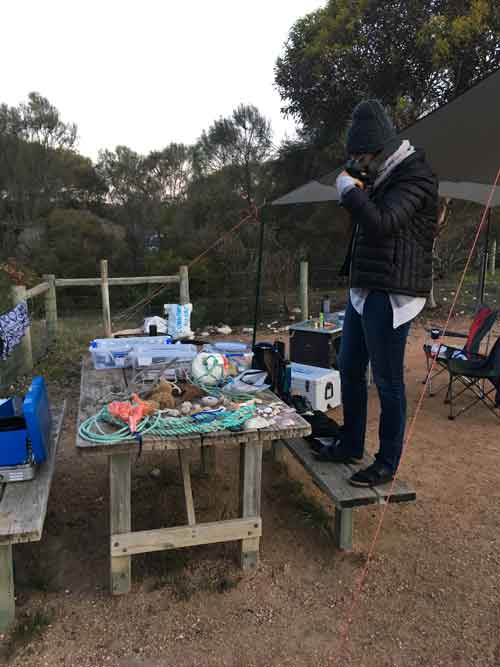
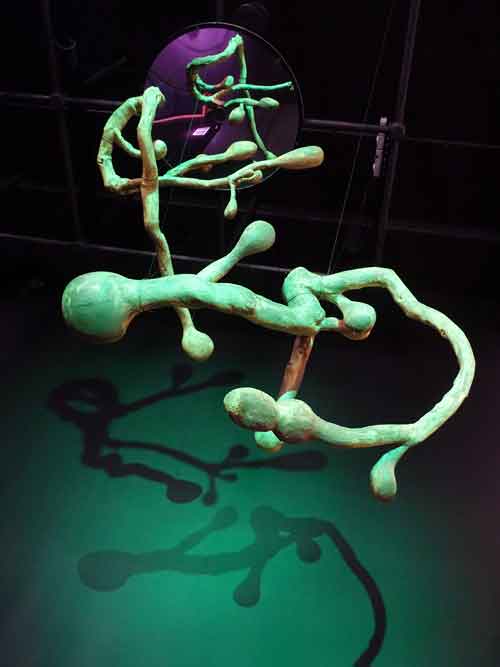
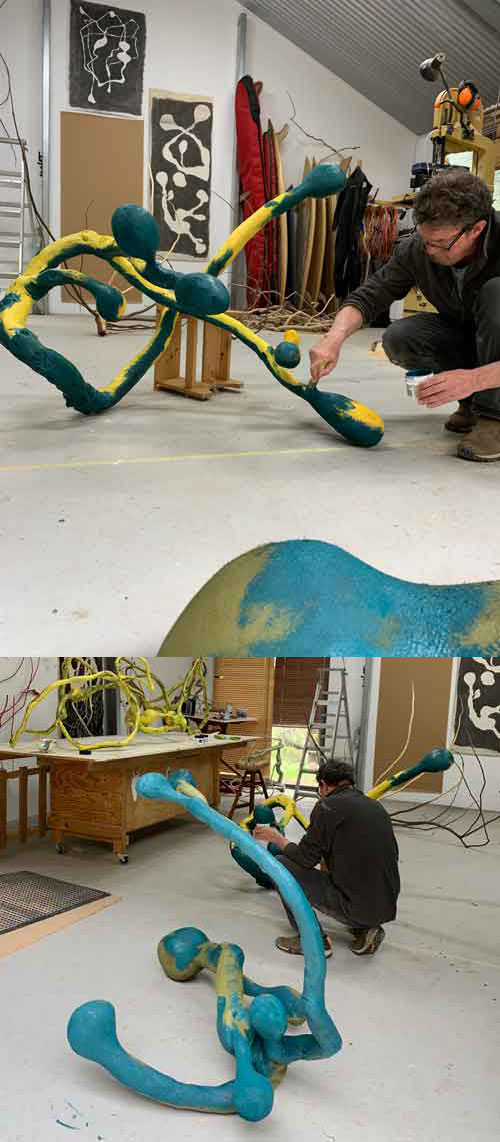
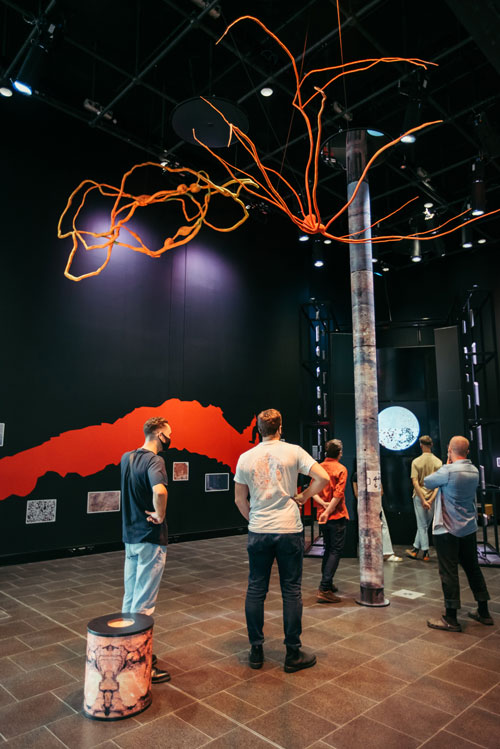
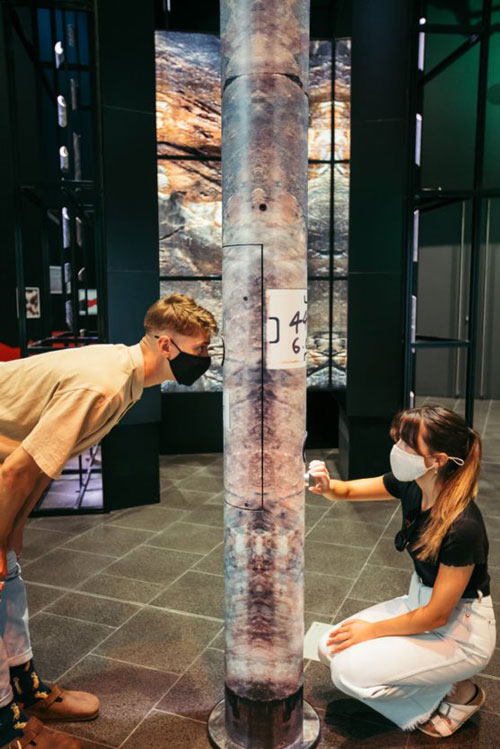
You can republish this article for free, online or in print, under a Creative Commons licence, provided you follow our guidelines.


